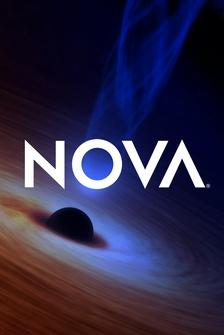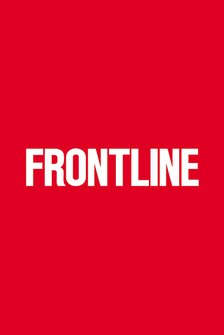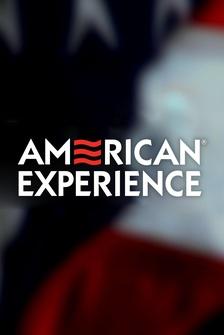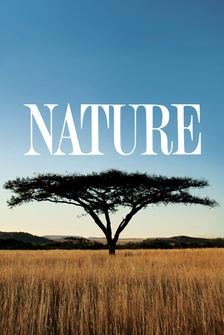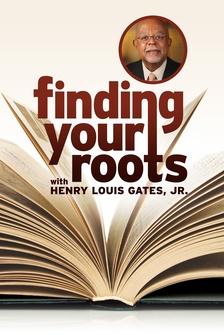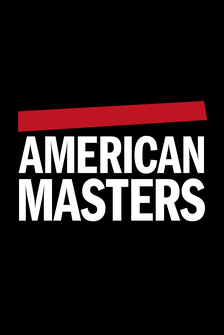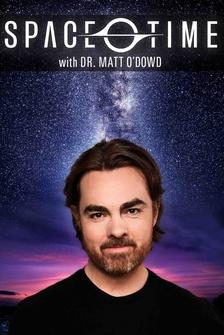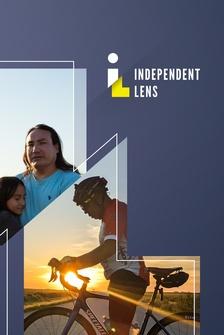Woman: Our indigenous science is connected to a very ancient knowledge and teaches us in a meaningful way that we're responsible for the Earth.
Man: This is my store.
Everything that I need to survive for a good, long life is right here.
Different man: We're still one with the land.
We still greatly appreciate and identify with the land here.
Woman: We've been here a long time.
What we do makes a lot of sense for this place.
[Insects chirping] [Thunder] [Birds chirping] [Birds chirping] Man: Everything that we see around us today is a descendant to those ancient people that have a spirit.
Before the Earth was even here, a couple spirits were going through the galaxies.
Kwahn is the silver fox and Jmul the coyote, and they met up with each other.
They wanted something.
They wanted something, which is the Earth, and so, they sang and prayed and used the power of their mind, and that created the Earth.
They weren't done.
They wanted something to be on there, and so they envisioned water, and they sang water songs, and there was water.
They looked at it, and it's beautiful, but it just needs more.
So they did it again, and they thought of creatures and beings, and then they put in the life in the water, all the fish.
Well, they looked at it, and they still weren't done because they have all this land.
They used the power of their mind, and they created all the beings that live on the land, all the deer, everything that we see here.
They created that, and they still weren't done, and so they filled the skies with birds, air, but those things can't help each other.
So they created humans, and you can help each and every one of these entities that these beings created.
That's our job because they can't help each other.
They could live there, and stuff will get out of whack, but that's our purpose, to keep stuff in balance, to help all of them.
Woman: California has always been a populace place.
It's home right now to 109-111 tribes, but back then, you're talking about tribes everywhere.
There is no empty space of wilderness that exists in this place that we currently call, California.
The way you know that there were California Indians everywhere is that every place had a name.
There was not, like, a mountain or a field or a region that there wasn't a tribe who had already named it.
So we had been everywhere, and we were everywhere.
When a lot of people learn about us, they learn about us as primitive hunter-gatherers, but we were everything, and we really thought about what does it mean for us to care for the world?
We don't separate ourselves from nature.
In fact, we're part of one big, important system, and we have a really important role to play in that system.
Man: In Native American belief, the importance to have connection to the land is essential for survival.
Without the land, we are not connected to the Earth, we're not connected to the universe.
We need that support and serenity and stabilization that the Earth provides.
Man: Good.
Different man: Ecological knowledge isn't something that can just be quickly learned.
It's a multigenerational thing, and it gets passed down.
Indigenous knowledge is developed over hundreds or thousands of years of doing the same practices in the same place and having that connection to land.
Man: It's engaging with the environment, engaging with the resources that are relatives to us.
You know, like maintaining their health so we could be healthy.
It's like this reciprocated relationship on a day-to-day level, and that comes with land management.
practices as a form of our religion.
Man: Understanding where we come from and the people we come from is important for everybody, you know, to be able to understand the direct areas that our people originate from and also to educate people who aren't from here about these living connections to a place, and that goes all the way back from before colonization, all the way into those ancient times from our creation times.
Woman: Traditional ecological knowledge is understanding that our indigenous science is connected to a very ancient knowledge, thousands upon thousands of years, if not more, of scientific observation, experiments, and ideas.
It's something that is tied to our language, our basketry, our food systems and teaches us how to connect those things together in a meaningful way that says we're responsible for the Earth.
Woman: This is what we're looking for.
So each sedge runner needs to be split down the center lengthwise, so I make a little slit with the knife at one end and then just carefully...
Here in Monterey area, land of my ancestors, baskets, as elsewhere in California, were used in practically every aspect of daily life.
When a person was born, they began their lives being cradled in a basket.
Obviously for food preparation, for eating from, storing gathering, carrying.
I mean, if you think of all the implements that we use today as modern people--our backpacks and our plastic containers to store our foods, all of these things that we can't live without, right?
In the past, those were created in the form of baskets.
In the times of my ancestors, baskets were absolutely vital.
You had to have them.
That would have been as important as people going to their daily jobs in this day and age to earn wages to pay the rent.
We have to do those things today, and people of the past had to have those baskets.
For me, it became so important to bring them back into the world because I'm driven to bring something back to life.
I want to honor our ancestors by doing it their way because that's what it's all about.
It's about the connection with the past, doing things the way they did so that we can carry it on.
Risling-Baldy: When we learn about basketry, we don't just learn about the plants that go into the basket but that what you're putting into it, the life that you're creating by creating that basket, the story that you're going to share with other people, the ways that that basket will be passed on, and when you approach the land, you always say thank you, and that to me, is a traditional ecological knowledge that sort of says humans aren't the most important thing on the planet.
In fact, we're part of one big, important system, and that's what we need to be reminded and really humbled to, I think, for a lot of what we do.
Yamane: People have asked me if there are any Ohlone songs that have been sung when we are gathering materials, but the fact is if there were, that knowledge has not been passed down to the present time.
I have actually created my own song using our language that I always sing before I leave, and it is telling the sedges thank you and telling it that the sedges are beautiful and it's a beautiful sedge place, which it is.
Ha ha!
[Singing in Ohlone language] Risling-Baldy: There's a lot of California Indian stories that talk about how human beings were given the voice, so our job was to speak on behalf of all of the animals, all of the trees and the rivers and the rocks to make sure that they were going to be safe.
So I think our languages, being that place-based and being that old, what you see is that our knowledge is really enveloped into that.
So when we have a name for something, it will generally tell you things like where does it grow, why does it grow that way, what does it do, what do we use it for?
We'll have different words for different uses of things, so there's the plant when it's in the ground, there's the plant when you pick it, there's the plant when it's ready to be used for basketry, there's the plant when you're going to eat it.
So it kind of tells you a lot about what we think through our languages.
Bommelyn: My life work has been in our language.
We speak the Dee-ni' language, a Tolowa Dee-ni' language.
We've been restoring our language and trying to revitalize the language to keep it in the present.
We have a verb for musseling, for example, so when you collect mussels, you rock them loose.
You pry them and rock them loose.
You don't scuff them off the rock and take all generations.
[Speaks Tolowa-Dee-ni'] means to move around.
It's a verb specifically for gathering mussels.
You never take the largest of any species.
You always leave it because they create the largest offspring, and you are very cautious of the young ones, the [speaks Tolowa-Dee-ni'] because they need to continue to grow.
So you usually harvest the middle-aged things from the ocean.
You're just taught to always respect the food because it's our sustenance.
It's a way of life.
You have a relationship with them that's very important.
So it's a very, very different view of the world having that relationship.
That's why the language, I think, is so important, as well, so we can share those concepts that come from the language itself.
Everything's house is their house, is their home.
The language helps us see that and understand that we are in the same realm.
It's not a nest.
It's not a web.
It's not an anthill.
It's their home.
Risling-Baldy: Our native foods are really important to who we are as native people in terms of they tie us very clearly to the places that we're from, and I think the complexity of that is when you feel almost indebted to the food that you eat because you need to take care of the things that give you that strength, that centeredness.
Alvarez: Well, this place, it's where my roots are.
It's where my whole being comes from.
I don't see a separation between me and this land.
I'm part of this land.
I did a coming-of-age ceremony.
I lived up here for about a month all by myself, you know, just to be with the land, the spirits that are here.
A lot of spirit activity up here.
This is my store.
Everything that I need to survive for a good, long life and all my kids is right here, you know, and so it's meant to be taken in a sustainable way.
Man: Can you take that over there, and-- Alvarez: Yeah.
Slap it on.
Man: Slice it up and season it up.
You can use to hold deer for everything--leather, rawhides, ropes, shelter, water bags, containers, the horns for making tools, the hooves for rattles.
A lot of the old people like the liver and the heart, choice cuts.
Heh heh.
Usually, we have a lot of--a lot of deer meat, you know, but we send it to our families in the cities who can't make it up here.
So we get a 5 or 6 deers at the butcher shop.
Alvarez: The elders, I'll give that to them, and their face is, like, "Oh!
It reminds me of my youth, you know," because they haven't had it in so long.
Makes me feel good.
That brings back memories for them.
Woman: We always knew how to hunt.
We always knew how to take care of our food, and we don't waste it.
We give it to everybody.
We didn't just hunt for us.
We hunted for our families.
Boy: That good heart meat.
Luis: Smells good.
Parrish: Mm-hmm.
Alvarez: A lot of people, if they've never tasted venison before, they don't like it.
They don't like that gamey taste.
Well, that gamey taste is nature.
It's not GMOs and the red dye they put it in cows to make it look like really pretty meat.
This is nature's meat, how meat's supposed to taste.
It's a good, hearty meat, you know, really good for you.
A lot of times, you know, nowadays, everybody's eating beef all the time, and that's why we're plagued with diabetes right now because we're getting away from that and getting some more modern foods, and that's what's--you know, it takes a long time for that--for generations to go by to get used to changing a diet like that.
This used to be all we used to eat, this and a lot of roots and fish and berries and all that stuff.
So, you know, we got to try to keep this here, preserve it for not only ourselves but, you know, our younger generations, so... My kids read about and learn about Native Americans in schools, and they'll tell me about "Hey.
Did, you know this?"
I'm like, "You're Hewisedawi, you're On Top people.
You are what you're reading about.
You're not just in the history books.
You are you," and that's why I take her out here.
I'll take them out here, and, you know, you got to be part of the land.
You are the land.
It's cool to see that cycle, and so it's real personal when my kids get out there like that.
Risling-Baldy: I think there's something really telling about the fact that during colonization they really came after our food and they really watched and focused on how we cared for each other through food.
With colonization, everything changes.
It's an invasion of who we are as a people.
It's an attempted destruction of who we are.
Man: When settlers came in, they saw a land that was empty, and so they said, "Hey.
This is an open land.
We get full reign of it," and yet it wasn't.
Every piece of this land was being used in some way, some capacity.
It was truly our garden.
Land was no longer able to be accessed in ways that were done in the past.
Water was all of a sudden being used by someone else, and they were saying it was theirs to use and couldn't be used for other purposes.
With the loss of land and the loss of water meant the loss of food, and the loss of food and starvation.
Woman: In the 1850s, it was illegal to own land if you were a California Native person, and it was also illegal to be homeless.
So you were not allowed to own land, and you were not allowed to own a home, but it was illegal to not own a home, and if you were caught vagrant, which if you didn't have any land and didn't have a home you were considered vagrant, you could be picked up for indentured servitude and serve for free for years, and then, you know, you'd come to the end of your period and be vagrant again and get picked up again.
People lived their whole lives like that, and then on top of that, they are setting up a political system and a state system of laws and governance that will legalize the genocide that they want to commit against California Indian people.
So California becomes a state.
One of the first things that it does is it passes a law to instill the volunteer militia.
These are mostly men who will register so that they can hunt Indian people and kill them and get money for their scalps and heads.
When you look at advertisements, what you see is that, they're advertising them at things like $5.00 a head and 25 cents per scalp.
The first year that they do this, the state of California says that it has paid $1 million for killing Indian people.
The second year they do it, it's $1 million.
Between around the 1700s to the 1900s, they know that our population was reduced by 90%.
So you're talking about a massive scale of genocide.
[Man singing in native language] Woman: A lot of the original people of this land carry a woundedness.
We are in a constant state of mourning.
That distracts from being able to just live and smile and laugh and sing and dance and build.
You're in a high-stress environment, that urban environment that everybody suffers from stress.
We suffer from it in addition to having a lot of this intergenerational unresolved historical grief, the loss of land, the loss of language, the loss of community.
We're hanging by the skin of our teeth.
Risling-Baldy: I think about how easy it would have been to give up and that when you think about the ways they wouldn't give up, they knew they couldn't remember everything, but they were going to remember one thing, and if that was a song or a recipe, a story, they were going to take that thing forward, and they were going to tell somebody else, and from that ability to be able to say that there was going to be a future comes the rest of us.
[Singing softly in native language] Man: This is our weekly sweat process for our men's sweat.
It's about purification.
We come down and take care of ourselves.
It's about the unity of the group, about coming together, and, you know, maintaining our sobriety, so living a clean and sober life.
It's kind of like traditional clinical work because it's a safe place to come, it's a place where you can process anything, any problems that you have going on.
You have support.
Man: We pray together, sing our songs, and, you know, lift each other up.
Man: Support--support people and then be supported by, you know, the fellas that are in there.
Lewis: Yeah, it's nice.
I really enjoy it.
McConnell: As an addict in recovery, you know, there ain't no better feeling than to kind of participate in something like this.
One day at a time.
All I can do is one day at a time, you know.
Few more hours, and I'll have another day down clean and sober.
Feels good to feel good.
Ferris: Throughout the week, taking just our normal hygiene, the air we breathe, the food we eat, the preservatives, you know, we build up toxicity, and so when we go into the lodge, we're able to purge that and purify when our pores open up and push that stuff out.
Risling-Baldy: All the things that we use in our sweats and in our steams come from our environment and the space in which we are from.
You use water from the river or the streams.
You use rocks from the places that you are from.
You are taking in the herbs.
You are taking in the water, you're taking in the things around you.
They're becoming a part of you.
The things around us feed us not just physically but spiritually and mentally.
McConnell: Being clean and sober, I see the beauty of everything, you know.
I mean, our water, our salmon, our deer, our pepperwood that we got right there.
That's our medicine right there.
They say that harmony, brings harmony to the group when we burn it and then we breathe it in and we smudge ourselves off with it.
It's peace and harmony, camaraderie.
No, no--everything bad can't come in.
Lewis: Our regular ceremonies come around every year, summertime.
You know, we have our regular brush dance, and then every two years, we have our white deerskin dance and jump dance, and this is a way we can get into ceremony every week.
You know, every week, we get in touch with our creator.
McConnell: That's what our Native American community's about, you know.
Support and be supported.
It's awesome.
The kids are our future.
There is a ceremony called the flower dance for these women that are coming of age, when they start their moon.
In the last few years, it's been, you know, 4, 5 families have had flower dances, their kids coming of age, and that's a big thing to be a part of.
Me and Boyd, we've been in a few, and it's a awesome feeling, I mean, dancing for those girls that had become women.
Woman: There's a number of things today that I am preparing for a ceremony.
There's some regalia that we're going to be making with maple bark.
That's a tl'oh-kya', which would be bark skirt.
Risling-Baldy: The flower dance is a women's coming-of-age ceremony.
We usually celebrate it when a girl starts menstruating.
It's a community sort of celebration of this young woman because she is becoming a woman, she is moving through her adolescence, and it is a way to sort of help her see what that's going to be like, the decisions that she's going to have to make, the life that she's going to have to lead, but what I see through the ceremony a lot is it actually is showing her that she is able to make those decisions for herself and that there will be a community to support her along the way.
Woman: You kind of want to find a spot that's kind of flat with no, like, knots because the knots when you're peeling it will make it so that it has a little hole in it, right?
Risling-Baldy: In the flower dance, the young woman actually has a bark skirt, it's like a maple bark skirt, and the maple bark skirt because they're going into the water, it absorbs the water, it takes on the water, and then the water runs down their legs, and they can still remember those moments of feeling connected to that water as they're carrying it with them.
George-Moore: So what you're after is this inner cambium.
Man: Yeah.
George-Moore: And that's where the sap runs, and that's the one that will split, and it's smooth, too, because if you're going to wear these it's not gonna be scratchy.
Ha ha ha!
Woman: And then it just breaks down just like this.
Different woman: Wow.
George-Moore: And so you can actually get a dress done--if you have all the bark laying in front of you, you could do it in a day.
Risling-Baldy: During adolescence, a young girl's self-esteem plummets.
This is not just for Native girls.
It's for any girl, and so that's the study that's been done.
They've also done studies that show you can actually combat this lowering of self-esteem among young women just by sharing positive stories of adolescence and menstruation with them.
That's what a flower dance is.
It's bringing these girls together for people to talk to them and tell them about what a wonderful moment of their life this actually is and all the things they can look forward to and all the ways that people are going to be there to support them.
With this particular ceremony, too, that it's not just about this one young woman, although that's important because she is the reason why we are coming together, but what's happening in that regard is it asks her family to come together, it asks then her community to come together, and they have to address certain things that have been happening, and so it just reverberates out.
I think our ceremonies were always that way.
They were always spaces that asked us to think about our role, our relationship with each other, our relationship with the Earth, our relationship with everything.
Alvitre: In all the chaos and the insecurities of our communities, Moomat Ahiko, our traditional plank canoe, brings people some healing.
Everybody talks highly about her.
[Woman singing in native language] Moomat--ocean; Ahiko--wind; Ahikan--breath.
She came to me in a dream a long time ago.
Reporter: Cindy Alvitre is a Tongva native.
One night, she envisioned her people paddling in their native canoes, or ti'ats.
Alvitre: In the dream, I was hearing children playing, so I went to check on them.
It was my children, and they were standing before this warrior with volcanic lava shooting out his forehead, but suddenly, there's this water, a lake in front of him.
In this lake where these boats, these wooden plank boats.
Dream, vision?
I don't know.
Reporter: Within a year, the dream began to materialize.
In a backyard in Santa Barbara, Cindy and other members of her tribe came together to build a traditional canoe and revive their Ti'at Society.
Woman: The Ti'at Society is a group of people that are reconnecting with the ocean, reconnecting with what our ancestors did, trying to educate people that we're still here.
So we are building the baby ti'at for the Natural History Museum.
This is a little baby version of what our ocean vessel is.
Woman: Whether you're Tongva, Chumash, or Acjachemen like myself, everybody is working together as one big community so that, you know, people who go to the museum can actually see it and find out more about it because we know that we built boats, but other people have no idea.
Woman: When we started building this baby ti'at, there have been many steps, and each of them has brought their own teaching from a different people.
I had the blessing of actually being in the original group that went to go ask the people of Karuk country if we could have some other redwood.
It wasn't that we went to Home Depot or Lowe's or some hardware store to just pick up pieces of plywood.
It was literally going and asking an individual who this was his life's work to be able to get these redwoods.
Alvitre: Everything is a relationship when you're building those boats.
It's all a relationship that you establish with that boat.
Aguilera: The same way that she is the breath of the ocean, she's also the breath of our community, she's the life of our community.
She's brought us together.
Man: Well, we need to cut it like we did before.
When I push it, just steady it like that.
Steady it, steady it, steady it, steady it.
Alvitre: Our canoe master is Marcos Lopez.
He's Chumash.
Without his knowledge and his direction, we can't do it.
Aguilera: We have my Uncle Craig Torres, who, you know, is teaching us how to do cordage and learning the patience it takes to see it has to be consistent all the way through.
Alvitre: We're building it at Heidi Lucero's house.
She's Acjachemen.
Why?
Because she has the space, but also she has a particular knowledge and a talent that is contributing to that, and that's her work with the inlay for the abalone.
Aguilera: We also have people who are not even from California.
We have Sam Dennison, who is Dene, and he's bringing all his knowledge of knowing how to be an engineer, how to use the tools.
It's not just a hammer and a chisel anymore.
It's not just stones and a mallet anymore.
Lopez: Raise it up, raise it up, raise it up.
OK. Aguilera: And of course, my aunties coming and bringing food, them learning, myself coming and bringing food and myself learning.
Lopez: We're gonna put the plank right on top of here.
right?
Woman: Si.
Lopez: Just hold it and just kind of lead into that with your hand, your hips, or whatever, all right?
Ready, go.
OK. Aguilera: It doesn't matter.
If you don't know anything other than how to hammer, hammer.
It doesn't matter if you don't know anything other than how to cook some food.
It doesn't matter if you don't know anything other than how to sing.
As long as you come together as a community and you give that little bit of what you learn to be able to make this baby ti'at being born, you're still giving something of yourself, and you're still learning from other people, as well.
So it's creating that community.
McKay: There's a lot of resilience in native people and perseverance, but also I think it was guidance from a higher power to allow the knowledge to save us by living off the land by living with the land and being one with nature.
I'm sort of putting this into a modern context because we're still doing that.
We're still one with the land.
We still greatly appreciate and identify with the land here.
It means a lot to us, and it fortifies our resistance and resilience to climate change.
Bacock: We talk a lot in this day and age about climate change, but we also have to, I think, talk about climate control because part of the reason why we are in a state of things getting disrupted is because we feel we are the ones in control.
That comfort has consequences, and today, we are seeing the very beginning of those consequences of what it is to live comfortably.
Because we feel we need to be in control, we're not in the elements.
So we've really lost a lot of our connection to the land and connection to the water and connection to seasons and everything that is life.
Man: History cannot repeat itself.
The federal government, the dominant culture needs to give something back to the people where that knowledge harbors.
That is our medicine.
That is our way in life.
We are sharing our medicine with the rest of the world because we are world renewal people.
We believe in that with all of our heart, all of our knowledge.
We believe that this world can be fixed, but it's time to start listening to indigenous people around the world.
Risling-Baldy: Our knowledge is of an existence before colonization and capitalism, which means that we know how to imagine beyond colonization because we've already seen it, lived it, and passed it on generation to generation.
What's really important to understand is our knowledges have never stopped adapting.
changing, learning.
When we go out and gather now, we're noticing changes in the plants.
That's because of climate change.
It's because of the seizure of water behind dams.
It's because of the change of seasons that is happening, I think, all over the place.
You're not going to solve climate change without traditional ecological knowledge.
That's what is going to be able to move us forward.
It's not just about it being something of the past but something that's very adaptive and present and always a part of who we are.
We've been here a long time.
What we do, makes a lot of sense for this place.
Woman: I can open this up.
It's coming back from being on exhibit in L.A.
They don't skimp on packing material.
So these are two back skirts.
This is red ochre, natural dye.
These are glass beads and abalone.
This one, instead of the red ochre, I used oil, and then these were items that were kind of in the space where there used to be shells.
I kind of titled this dress "Our New Cultural Resources" because it seems like there's more plastic and trash available than there are actual resources, and so I kept thinking, "Well, maybe that's what our dresses will look like in the future," because it might be the only resource we have access to.
So there are several species of abalone.
For me, I prefer red abalone, but even the quality of those I'm seeing a change.
At one time, many of these species were available in our homeland.
You know, they're there still.
It's just not in the numbers that they used to be.
Hopefully someday, you know, future generations they'll be restored to the levels that they once were, but right now, it's scary.
It is.
It's scary to think that in your lifetime that, you know, a species could disappear.
Many traditional artists, whether in California or around the world, are on the front lines of seeing how climate change, as well as development and other factors, limit our ability to access materials.
Some of those places we've been going to for hundreds and thousands of years, and so we know what to expect when we go to those places, and so when those are changing over time and in the last couple of years changing more rapidly, it's a red flag for us.
Resources are always changing, and I think that indigenous communities have always been able to adapt and sustain themselves in some ways.
Our materials may have to change, but the intent doesn't.
Risling-Baldy: There's a lot that's happening, I think, all over the place around revitalization, reconnection, resurgence.
Our rivers are at the heart of that because you really can't have a healthy planet if your water isn't healthy.
The state of the river is the health of the world.
Charley: I come frp, Karuk, Hupa, and Yurok people of Northwest California.
A cultural thread amongst those 3 people is the river and the fish.
We have a symbiotic relationship ecologically, as well as culturally.
If the salmon die, we die.
Ron: A good year, we catch up to 2,000 fish, and a bad year, we catch less than a 100.
We're the second largest tribe in California, over 4,000 tribal members, so we're not even catching a fish per person.
We're not even getting a half fish per person.
Charley: It's a matter of trying to figure out how do you subside for, you know, your people?
Woman: All the tribes' role in this area is to restore the world to as close as we can manage to what happened previous to colonizers moving into our area and creating all of this destruction.
Woman: When non-natives came here for gold on the upper part of this river and they started doing hydro mining, which, you know, just blasted rock, which of course caused a lot of landslides and sediment into the rivers and really changed the dynamic of the river.
When there's sediment that comes into the river, it really impacts salmon habitat.
Salmon aren't able to really spawn in, you know, thick muck that comes down.
It's more, you know, they need that gravel to lay their eggs in.
Williams: What used to be almost a crystal-clear river is now muddy and green and warm and does not support the diversity of life that it used to.
Parker: It's actually amazing in a lot of ways, you know, that we even have any salmon left because human beings are just throwing so many things at them.
They live both in freshwater and saltwater.
They're going from warm river water to very cold ocean water.
Then they have all of the other things that humans are now throwing into the ocean--pollution and plastics, and the list goes on, right, of what's happening because of climate change.
You know, the river really is, like, the lifeblood of our culture, and in essence, we are what we eat, right, and we eat the Earth, so therefore our connectivity to the Earth is quite strong and profound.
We have to put the river quality first.
Man: The Trinity River is the largest tributary to the Klamath River, and from a fisheries perspective, the Trinity is super valuable.
Man: The Yurok tribe along with the Hupa Valley Tribe co-managing with federal agencies is part of the Trinity River Restoration Program.
It's a 40-mile reach of river restoring various aspects of the Trinity from the degradation of anthropogenic influence over time, everything from mining era in the 1800s to water diversion to the Central Valley.
Boulby: This isn't our ancestral land, but this is where our fish come from.
The river can no longer meander.
Now it's just like a ditch.
That's what we come here to do, try to change it back to the way it was.
Wiseman: This is all rock that we process from the mining tailings.
The tailings are an artifact of the bucket dredge mining, essentially all the gravel and sediment that got processed on a conveyor belt to remove the gold.
No amount of river power can scour them or remove them.
They need to be manually removed.
Boulby: This isn't the way it was.
This should be grassy meadows with fingers and boiling with fish up here, and with us stepping in and fixing things, the population should be stronger in theory.
We'll see.
Clayburn: We're going to change our life back to something that's more traditional and allow our people to be healthy again.
Parker: Our viewpoint is that we're part of nature and we're synchronized with nature, and our language and our culture and our food all evolve synchronously, not independently, and when you remove one of those from the equation, like, with all of the problems with our river and the dying off of our salmon, when you remove one of those legs of the triangle, it greatly affects the other ones, so our language is affected, our culture's affected.
At the core of tribal sovereignty is food sovereignty.
Food is a extremely important part of any culture, especially a culture that survived on the same food products for tens of thousands of years.
We evolved to eat this food.
Medina: There's a contemporary phrase that we have, which is [speaks native language] Ground turned to stone, but the world is still alive.
You know, we're in the midst of all this urbanity.
We got to make sense of our world, and it is urban.
The ground is stone, and no matter what, you know, you can never separate us from this place either.
We're doing what we can, you know, with what we have available, and so sometimes, that means creating a cafe space in the back of a bookstore.
Think the smoker can go back there.
That reclaimed table can go right down here.
Louis and myself started Mak-a'ham, which in Chochenyo language, it means our food.
Louis Trevino: It's an organization that we started in order to return our traditional Ohlone foods to our families, who haven't experienced them in at least two generations.
Every other culture is represented in their cuisine here in the Bay Area.
It's important that Ohlone foods are also in that space.
By having Ohlone Foods here today, it makes it inarguable that we are here.
Medina: This is [speaks native language].
This is an herb that we make into a tea.
It's that quintessential taste of home.
This very place right here could be where our direct ancestors gathered 400 or 500 years ago, and when we're gathering, again, just getting back into that groove of how our people have always done it.
This is bay laurel.
In our language, we call this [speaks Chochenyo].
In Rumsen... [Trevino speaks Rumsen] [Medina repeats Rumsen] Just to show respect, we'll introduce ourselves and say thank you.
[Speaking Chochenyo] One thing that I try to think about a lot is what our world would look like if we were never invaded and colonized by outsiders, but if we were allowed to absorb things from the outside world on our own terms.
You know, for me, I think that our contemporary foods that we're making are foods that our people would recognize because they're rooted in everything that's traditional.
We don't cook with anything that wasn't here in those pre-contact days.
Trevino: In the fall when acorns come, we gather and prepare those for the coming year.
That is a sustainable food source that lasts all year long.
In the springtime when the greens come up, those are so good for you.
They're so cleansing, especially after a long winter.
They clean your body, and they get you ready for the coming year.
When the seeds come, those are so full of energy.
The berries and all the sugars and the antioxidants that are in those that come in summer.
They fuel you for the summer, and then in the fall when the mushrooms come and the root vegetables are ready, those are dense, and they give you everything that you need to get ready for another winter.
So every part of that and every part of staying in season with your foods, with what's happening with the land, with the weather, it puts you in tune with what's happening in the natural world.
Medina: There is always room for creativity, but we also know that there's rules that we have to follow, too.
With those rules, that means that we have to be steadfast in making sure that we don't change things too much because otherwise that changes the nature of what our food is.
[Indistinct chatter] Just so everybody knows what our menu is today.
To start off, we have a rose hip tea and an elderberry tea.
A native green salad and a dressing of walnut oil and blackberry juice.
We have soft boiled quail eggs, acorn soup, one of them with wildflower honey.
One of them is left unsweetened.
Acorn flour brownies.
We have venison that's currently being smoked with bay laurel and bay salts from San Francisco Bay Shoreline.
So [speaks Chochenyo] welcome.
[Speaks Chochenyo].
Now let's eat.
We just want this place to be an expression of our culture and show that to both our community people and also to the public so that they know, you know, how lasting this is, how real this is, and how tangible this is.
Trevino: We're empowered by old foods, we're empowered to do good, to revive our languages, to revive our stories, to revive our arts, protect our sacred sites.
Our foods give us the fuel to do those things.
Lopez: Steady, steady.
OK. Yeah.
Whoo!
Aguilera: Whoo!
Risling-Baldy: I do think that people think of native people as in the past.
I also think that they think of our culture and our knowledge as stagnant, that everything that we were learning or that we were doing kind of stopped and that suddenly we are not learning, doing, building, being anymore, but I think every California Indian tribe that I have ever looked into had a lot of resilience no matter what, and they all found their own ways to disrupt an interrupt and liberate themselves from what was going on during colonization.
Woman: I think that's such an inherent part of being an indigenous person.
You take the tools of colonization, right?
You take all these things that you have to work with now, and then you use those things that colonization has given you and then bring it back to our traditions, meaning we grow our own basketry material, we advocate for ourselves through policy decisions, we write books, we become academics, we perpetuate our traditional ecological knowledge so that the world knows that this is actually an important thing and it means something.
I think that's a very powerful thing.
Risling-Baldy: If people are still thinking about us in the past, they should remember that much of the knowledge that we have today is really based on indigenous knowledge, much of the food we have today is really based on indigenous foods, and I think the ways that we're thinking now about how we move forward for what's happening with our planet and our environment, when people start to learn about indigenous peoples and kinds of ways that we'll approach something, they think, "Yeah, that makes a lot of sense."
What we're going to see is that the land almost, like, wakes up.
Suddenly, the birds are singing in different ways, and the seaweed is growing better, and maybe the whales return to places that we don't even think of them as being in.
Our ability by which to move forward in this world comes from our culture and our heritage and our histories, and that's what we have to remember.
We already have all the tools we need to make a good world.
We just have to reclaim it.


